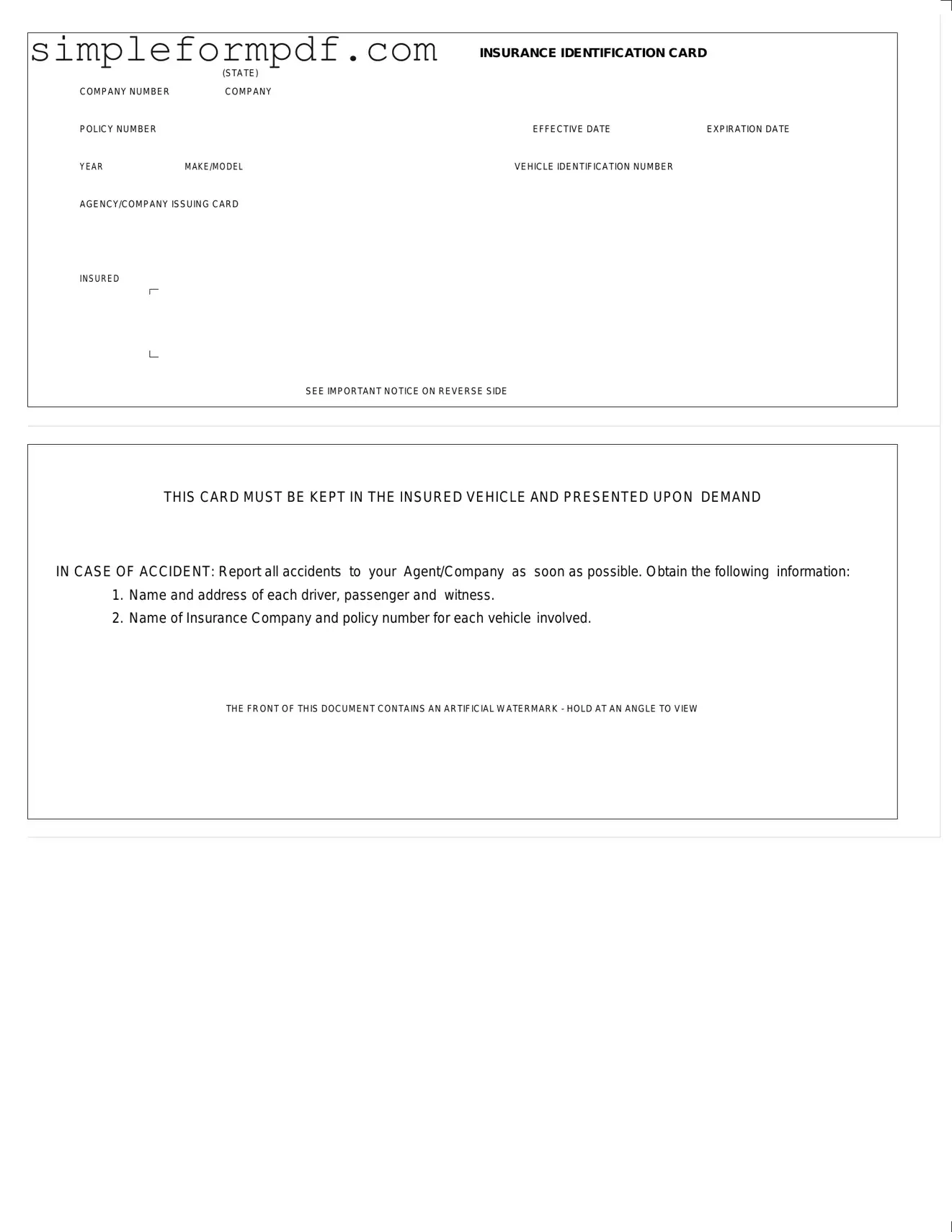Auto Insurance Card PDF Form
An Auto Insurance Card is a document that provides proof of insurance coverage for a vehicle. It contains important details such as the company number, policy number, effective and expiration dates, and vehicle identification information. Keeping this card in the insured vehicle is essential, as it must be presented upon demand in case of an accident.
To fill out the Auto Insurance Card form, please click the button below.
Launch Editor

